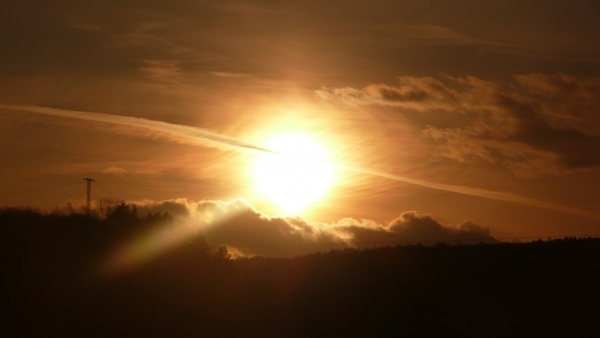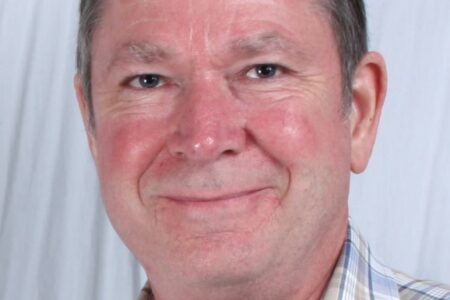Opinion: A SAD dilemma
As autumn sets in and the sunlit hours of each day diminish, some people begin to notice that their moods dim along with the daylight. Northerners generally begin to feel the effects earlier in the fall, as the shrinkage of their daylight is earlier and more pronounced.
Seasonal affective disorder (SAD) is real. It was identified in a paper by Norman E. Rosenthal and Thomas A. Wehr in 1984, but it has been noted in historical record as early as the fourth century when Posidonius of Rhodes wrote about autumnal melancholy.
Migrating for sunshine?
Many of the “snowbirds” who flee northern latitudes for warmer, sunnier parts of the world travel to escape the depression that dogs them during winter months. But it’s becoming more problematic to travel; there are the recently-publicized difficulties with airlines and their cavalier treatment of passengers, tiresome and intrusive security measures, and for those who understand the threat of climate change, the burden of awareness of travel’s harmful carbon load ― especially air travel. For many people, the cost alone is a barrier.
Where you gonna run to?
Then there’s the problem of finding a suitable haven with lots of sunshine. Florida? Not right now, thanks, and that goes for much of the southern US; if it isn’t hurricanes and floods, it’s droughts and wildfires. For people of colour, travel to the USA has a whole other set of hazards and the risk of incivility (or worse) may have increased lately. Mexico? Earthquakes, more hurricanes, and then there are the drug lords, the shootings and other mysterious deaths of tourists.
Much of southeast Asia is also under water from the worst monsoon rains in years, and the death toll there is probably around 1200 people. In other words, the list of reasonably safe, comfortable, sunny places to visit has been shrinking, and they may be getting a bit crowded with other tourists.
Tourists not always appreciated everywhere
In some destination locations, the locals are getting tired of the effects of too many tourists: high rents driving residents out, crowds clogging the avenues ― a recent article on Venice noted anti-tour ship demonstrations by residents. Another article lists 15 tourist destinations that are “telling tourists to stay home” ― at least, are regulating numbers of tourists in some way, many for environmental concerns. Not only Venice, but also a number of Mediterranean settlements, Bhutan and other places ― even Iceland.
Other ways to relieve SAD
It may be more fun and challenging to set boldly off to distant lands in search of sunshine, ignoring the impacts of travel on climate change and intruding on the lives of the locals at your destination, taking the minor and major inconveniences in stride with a positive attitude, but are there other options for relief from the depression of darkness (or should that be the darkness of depression?)
Recent medical studies on SAD suggest that many sufferers can find relief by exposing their eyes to broad-spectrum bright white light. Most of us have heard of “light boxes” ― commercial lamps specifically designed to combat SAD. However, consulting your doctor first is best, even if no prescription is required to buy a light box. There are some conditions that don’t do well with light therapy.
There are also antidepressants that can help with SAD, but as a recent article on SAD in Psychiatric Times notes, “The adverse effects associated with various antidepressant drugs are well recognized.”
What kind of light?
“Broad-spectrum bright white light” (note: not “full-spectrum”) may sound like a rather vague definition for therapy, but that’s what has been found to help. Blue light is not believed to be any more effective, and may increase the risk of macular degeneration. Ultra-violet light should be avoided because it is associated with cataracts and other ill effects on both the eyes and skin.
If just going for long walks outdoors during the day doesn’t help enough, one can try a light box. Using it in the morning is best, but not too early, and less than an hour should provide enough light exposure. But wait: how do we know that a particular model of light box is tested and meets the criteria for safety and efficacy? If you suffer from SAD and your doctor agrees that a light box might help you, do a bit of research first.
Consult this not-for-profit organization:
At the website of the Center for Environmental Therapeutics, there is a page with list of qualities to look for; here’s their list:
- The box should provide 10,000 lux of illumination at a comfortable sitting distance. (Product specifications are often missing or unverified.)
- Fluorescent lamps should have a smooth diffusing screen that filters out ultraviolet (UV) rays. UV rays are harmful to the eyes and skin.
- The lamps should give off white light rather than colored light. “Full spectrum” lamps and blue (or bluish) lamps provide no known therapeutic advantage.
- The light should be projected downward toward the eyes at an angle to minimize aversive visual glare.
- Smaller is not better: When using a compact light box, even small head movements will take the eyes out of the therapeutic range of the light.
If using a light box seems to result in headaches or other ill effects, it may help to adjust the time of exposure, the length of exposure, how directly the light shines in the eyes, or how close one sits to the light.
If a light box can help improve the mood and energy levels of someone with SAD, then it’s probably a cost-effective investment ― much less expensive, both personally and environmentally, than flying off in search of sunlight in someone else’s neighbourhood.


























